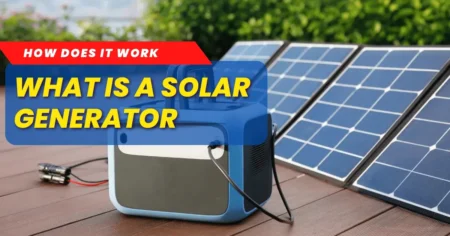Generators are handy devices that provide power when electricity is unavailable. However, starting a generator can be tricky if you’re unfamiliar with the process. This comprehensive guide will walk you through the steps to start a generator quickly, ensuring you have power when needed.
Why Do You Need a Generator?
Generators are essential for keeping your home running during power outages. They can power your refrigerator, television, lights, and other essential devices. Generators are also valuable for camping trips, outdoor events, and work sites where electricity isn’t readily available. Having a generator on hand can make a significant difference in maintaining comfort and safety during emergencies.
What You Need to Start a Generator
Before starting your generator, gather the following items:
- Generator
- Fuel (such as gasoline or diesel)
- Oil (if required by your generator)
- User manual
Steps to Start a Generator

Follow these detailed steps to start your generator:
Step 1: Check the Fuel
First, ensure your generator has enough fuel. Open the fuel tank and check the level. If the tank is empty or low, fill it with the appropriate fuel, typically gasoline or diesel.
Step 2: Check the Oil
Oil is crucial for the smooth operation of your generator. Use the dipstick to check the oil level in the generator. If it is low, add the recommended type and amount of oil as specified in the user manual.
Step 3: Open the Fuel Valve
The fuel valve allows fuel to flow to the engine. Locate and open the fuel valve to ensure the engine receives fuel when you start the generator.
Step 4: Turn On the Choke
The choke helps start the engine, especially when it’s cold. Locate the choke lever and turn it to the “On” position.
Step 5: Turn the Engine Switch On
The engine switch powers the generator. Turn the switch to the “On” position to prepare the generator for starting.
Step 6: Pull the Starter Cord
Firmly grasp the starter cord handle. Pull it quickly and firmly. The engine should start after a few pulls. If it doesn’t start immediately, don’t worry—repeat the process until it does.
Step 7: Turn Off the Choke
Once the engine runs, turn the choke to the “Off” position. This allows the engine to run smoothly and efficiently.
Troubleshooting Tips
If your generator doesn’t start, try these troubleshooting tips:
- Check the fuel level and refill if necessary.
- Verify the oil level and add oil if needed.
- Ensure the fuel valve is open.
- Inspect the spark plug for any issues and replace it if necessary.
Safety Tips
Operating a generator safely is crucial to prevent accidents and injuries. Follow these safety tips:
- Always use the generator outdoors to avoid carbon monoxide poisoning.
- Keep the generator away from windows and doors.
- Avoid touching the generator with wet hands.
- Keep children and pets away from the generator while it’s in use.
Maintenance Tips
Regular maintenance ensures your generator operates efficiently and lasts longer. Follow these maintenance tips:
- Change the oil regularly according to the manufacturer’s recommendations.
- Check and clean the air filter.
- Run the generator every few months to keep it in good working condition.
- Store the generator in a dry, secure location when not in use.
Frequently Asked Questions
How Do You Start a Portable Generator? To start a portable generator, check the fuel and oil levels, switch the engine to the “On” position, and pull the starter cord firmly.
What Should You Do Before Starting a Generator? Before starting a generator, check the oil and fuel levels and ensure all connections are safe for operation.
Can You Start a Generator Without a Key? Yes, many generators can be started using a pull cord or a push-button start, eliminating the need for a key.
How Often Should You Test Your Generator? It is recommended that you test your generator monthly to ensure it functions properly when needed.
Conclusion
Starting a generator is straightforward if you follow the proper steps. Begin by checking the fuel and oil levels, open the fuel valve, and turn on the choke. After pulling the starter cord, turn off the choke once the engine runs. Adhere to safety guidelines and perform regular maintenance to keep your generator in top condition, ensuring reliable power during outages and other situations.
See from us more related:


















